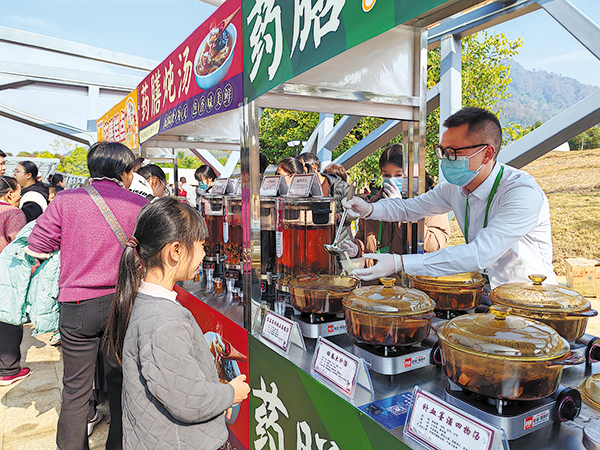TCM plantations are herbal remedy for communities
Innovative health teas not only benefit patients, but also the villages and people where the ingredients are planted, Yang Feiyue reports.


The base adopts a "herb-grain "rotation model — the meadowrue corydalis root is sown in November and harvested by May, after which the land is immediately returned for rice cultivation — seamlessly transitioning from medicinal herbs to staple crops.
"This model effectively doubles landuse efficiency," Wei says.
Additionally, the loose soil and ample nutrients left behind by the herbal crops help repel pests and crop diseases and increase yields.
Meadowrue corydalis root is just one among many other herbs that have thrived in the village.
With a forest coverage rate exceeding 86 percent, a warm, humid climate, and selenium-rich soil, Donglan is home to more than 768 species of medicinal herbs, including highly prized varieties.
"Leveraging these natural advantages, the county is committed to the principle that lucid waters and lush mountains are invaluable assets, positioning TCM as a key pillar for development," says Pan Huakai, deputy head of the county.
In recent years, Donglan has adopted a three-pronged strategy combining ecological cultivation, intensive processing, and cultural tourism focused on health preservation.
Under the guidance of the Three-Year Action Plan for TCM Industry Development (2023-25) issued by the county government, Donglan rolled out a series of policies to support the industry, from special funding to a full supply chain system.



































